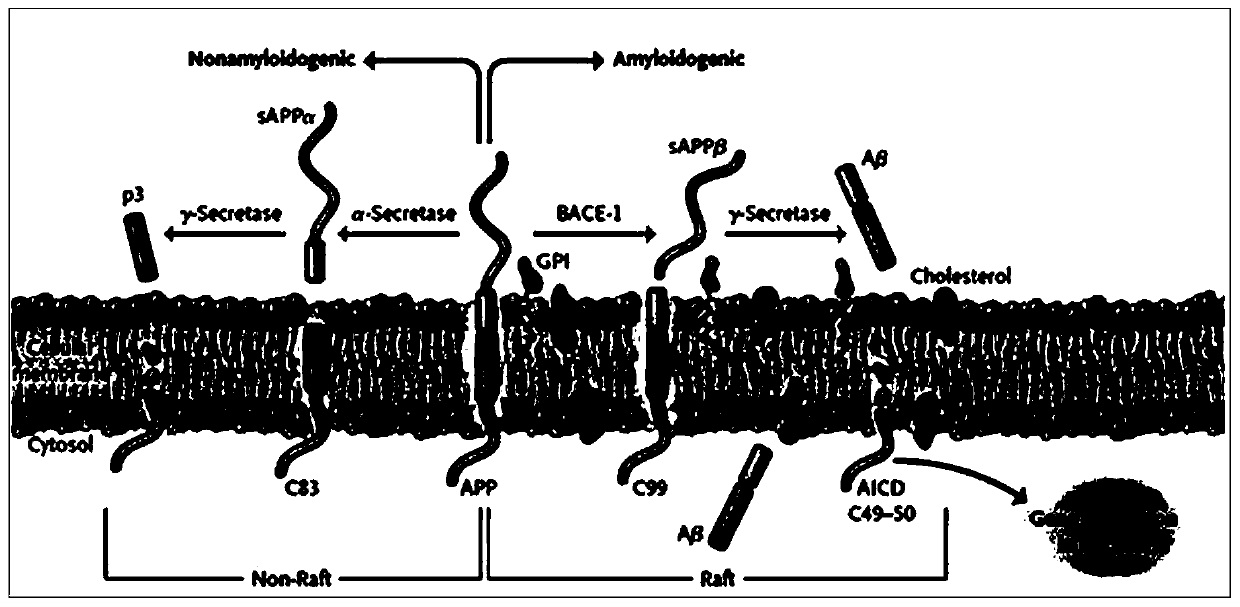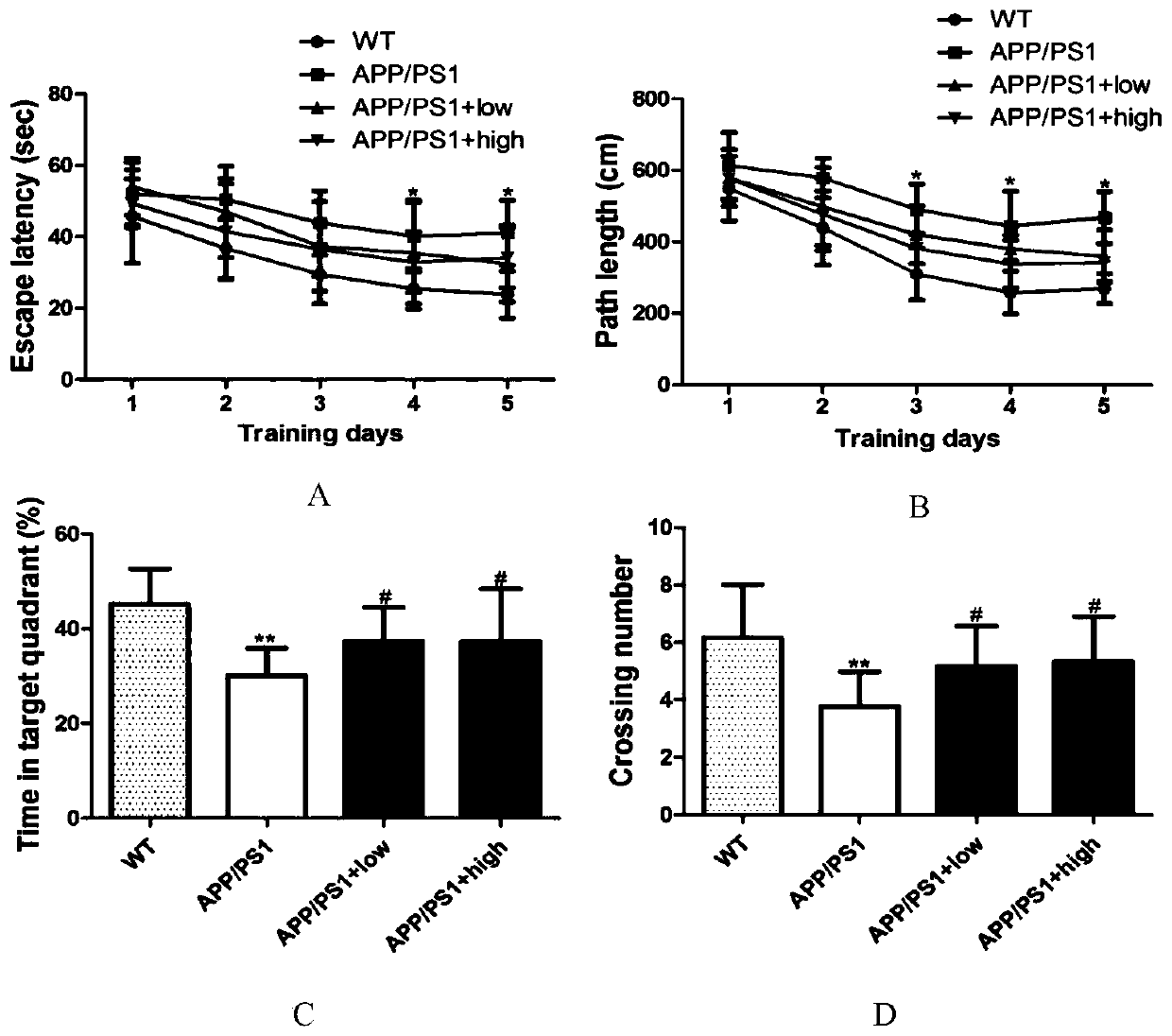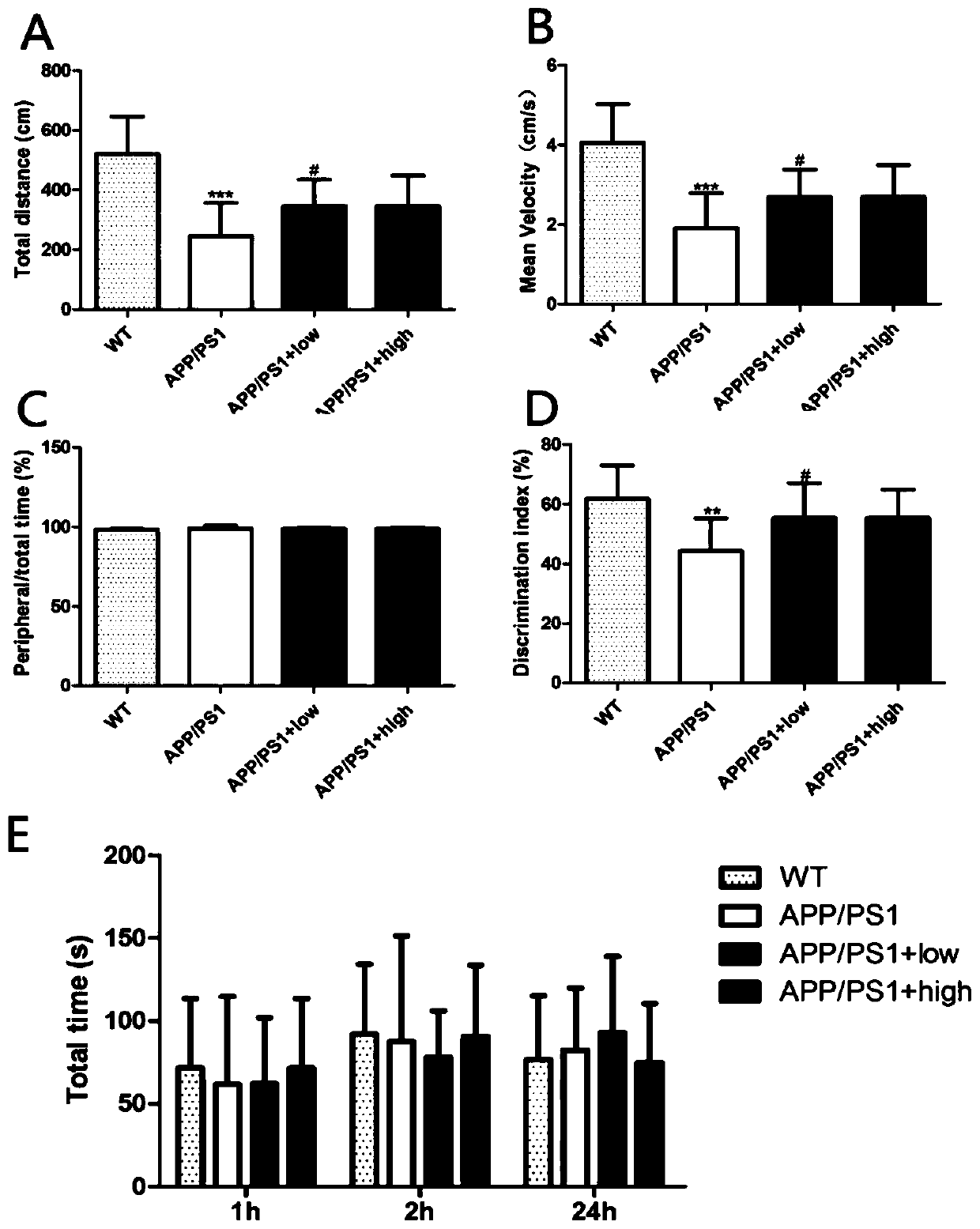Application of Astragalus Powder in the Preparation of Drugs for Preventing or Treating Alzheimer's Disease
A technology of Alzheimer's disease and Radix Astragali, which is applied in the application field of Huangqi powder and medicine, can solve the problems of poor efficacy of Alzheimer's disease, achieve prevention and treatment of Alzheimer's disease, improve cognitive decline, inhibit The effect of Alzheimer's disease
- Summary
- Abstract
- Description
- Claims
- Application Information
AI Technical Summary
Problems solved by technology
Method used
Image
Examples
Embodiment 1
[0043] 1.1 Transgenic mouse model:
[0044] The Alzheimer's disease double transgenic mouse model APPswe / PS1dE9 (APPswe, Swiss familial AD-induced mutant type, presenilin1, presenilin 1)) model used in the present invention was purchased from Nanjing Institute of Model Animals. They were kept in the animal room of Shanghai University of Traditional Chinese Medicine. The strain name of Jackson Laboratory: B6C3-Tg (APPswe, PSEN1dE9) 85Dbo / J; serial number 004462. This double-transgenic Alzheimer's disease model mouse expresses the Swiss familial AD-induced mutant of human APP and the mutant of PS1 with the deletion of the ninth intron mutation site. These two genes Mutations genetically co-segregate in this mouse. This mouse model usually begins to deposit amyloid plaques in the brain at 6 months of age, and develops learning and memory impairments at 9 months of age, with pathological manifestations similar to Alzheimer's disease. Raised in SPF rat room, provided with suffic...
Embodiment 2
[0090] 2.1 Chinese medicine extraction and feed preparation
[0091] The present invention is composed of Radix Astragali, Radix Puerariae and Cortex Mori, the mass ratio of Radix Astragali, Radix Puerariae and Cortex Morus is 1:2:1. Astragalus membranaceus and Cortex Morus alba were crushed together and extracted twice with ethanol with a concentration of 70% by mass percentage, extracted for 2 hours each time, filtered through 100 mesh, combined with two extracts, concentrated under reduced pressure to 2g / ml, vacuumed at 75°C Dried to dry extract, 786.5g was obtained, and the yield was 19.66%. (The following experiments all use this component to feed)
[0092] This experiment has prepared the mouse feed of the present invention of two doses: 1) low-dose feed, the extractum that adds 20g Radix Astragali, 40g Radix Puerariae Radix, 20g Cortex Mori crude drug is made into low-dose mouse feed by every kilogram of feed. 2) The high-dose feed is made by 3 times the dose of the l...
Embodiment 3
[0109] Example 3 Immunohistochemistry and Quantification
[0110] 3.1 Fixation and sectioning of mouse brain tissue
[0111] After feeding APP / PS1 Alzheimer's disease transgenic mice with the feed of the present invention for 6 months, the mice were anesthetized by intraperitoneal injection of 12% chloral hydrate (400mg / Kg), and the chest cavity was quickly opened after the mice were deeply anesthetized , expose the heart, perfuse the heart with 50mL of 0.9% sodium chloride aqueous solution and continue to perfuse with 100mL of fixative solution (4% paraformaldehyde). hours, and then put the brain tissue into 30% sucrose solution. After the brain tissue was settled, frozen sections were performed on a slide microtome (Lecia Company). We mainly studied the hippocampus and cortex regions of the brain slices (from bregma-1.92 to -4.36mm). The thickness of the brain slices was 25 μm, and 1 of 6 were placed in the same hole, and 6 sets of brain tissue slices could be obtained for...
PUM
 Login to View More
Login to View More Abstract
Description
Claims
Application Information
 Login to View More
Login to View More - R&D
- Intellectual Property
- Life Sciences
- Materials
- Tech Scout
- Unparalleled Data Quality
- Higher Quality Content
- 60% Fewer Hallucinations
Browse by: Latest US Patents, China's latest patents, Technical Efficacy Thesaurus, Application Domain, Technology Topic, Popular Technical Reports.
© 2025 PatSnap. All rights reserved.Legal|Privacy policy|Modern Slavery Act Transparency Statement|Sitemap|About US| Contact US: help@patsnap.com



